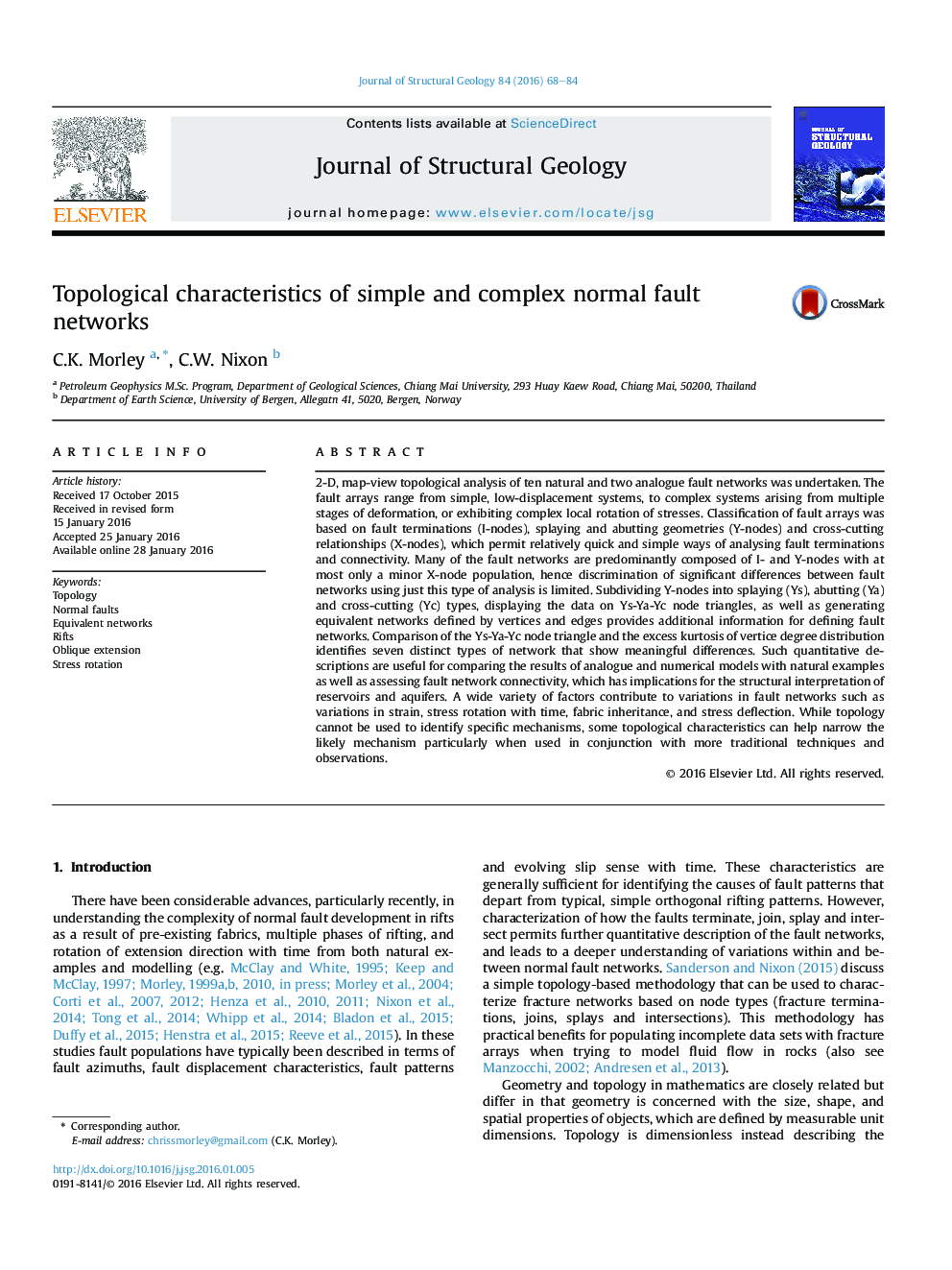| کد مقاله | کد نشریه | سال انتشار | مقاله انگلیسی | نسخه تمام متن |
|---|---|---|---|---|
| 4732932 | 1640496 | 2016 | 17 صفحه PDF | دانلود رایگان |
• A range of topology analysis is proposed to characterize normal fault networks.
• The 12 fault networks studied can be divided into 3 main groups.
• The networks can be further subdivided into 7 types.
• A broad link between topology characteristics and cause of network complexity.
2-D, map-view topological analysis of ten natural and two analogue fault networks was undertaken. The fault arrays range from simple, low-displacement systems, to complex systems arising from multiple stages of deformation, or exhibiting complex local rotation of stresses. Classification of fault arrays was based on fault terminations (I-nodes), splaying and abutting geometries (Y-nodes) and cross-cutting relationships (X-nodes), which permit relatively quick and simple ways of analysing fault terminations and connectivity. Many of the fault networks are predominantly composed of I- and Y-nodes with at most only a minor X-node population, hence discrimination of significant differences between fault networks using just this type of analysis is limited. Subdividing Y-nodes into splaying (Ys), abutting (Ya) and cross-cutting (Yc) types, displaying the data on Ys-Ya-Yc node triangles, as well as generating equivalent networks defined by vertices and edges provides additional information for defining fault networks. Comparison of the Ys-Ya-Yc node triangle and the excess kurtosis of vertice degree distribution identifies seven distinct types of network that show meaningful differences. Such quantitative descriptions are useful for comparing the results of analogue and numerical models with natural examples as well as assessing fault network connectivity, which has implications for the structural interpretation of reservoirs and aquifers. A wide variety of factors contribute to variations in fault networks such as variations in strain, stress rotation with time, fabric inheritance, and stress deflection. While topology cannot be used to identify specific mechanisms, some topological characteristics can help narrow the likely mechanism particularly when used in conjunction with more traditional techniques and observations.
Journal: Journal of Structural Geology - Volume 84, March 2016, Pages 68–84
